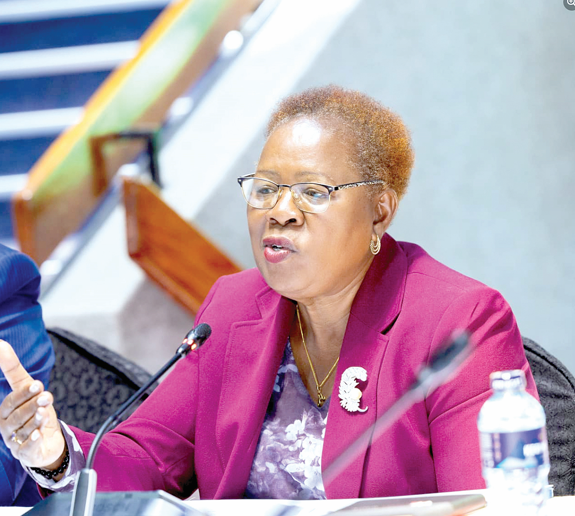Kenya faces affordable housing shortage as projects lag behind

Kenyans burdened by high rent must wait longer as the ambitious Affordable Housing Programme (AHP) in Kenya, meant to deliver one million housing units by 2027, is encountering significant delays.
Housing and Urban Development Cabinet Secretary Alice Wahome disclosed that, to date, only 140,000 units have been completed, falling short of the annual target of 250,000 units. This shortfall persists despite the mandatory 1.5 per cent housing levy deducted from workers’ salaries, intended to fund the initiative.
The “Boma Yangu” platform, designed for prospective homeowners to register, has seen over 300,000 applicants, highlighting a substantial demand that the current supply struggles to meet.
Wahome attributes the delays to legal challenges and procedural hurdles that have impeded progress. She remains optimistic, however, that the pace of construction will accelerate to meet the set deadlines. “Along the way, we may be able to recover the lost time because we are around 140,000. You understand that there was a snag at the beginning, and there was disruption of court cases,” she stated during a recent site visit in Nairobi.
The government plans to release 5,000 units by April 2025, adhering to the ‘one ID, one house’ policy to ensure equitable distribution. Essentially, the programme according to President William Ruto is geared towards enhancing dignified habitation, a factor that has only been a dream by slum dwellers over time.
“The units will cater for everyone including low-income people and the middle class. This initiative is designed to not only provide homes but to enhance dignity and equality across the nation,” Ruto said at an event. Despite these efforts, the programme faces criticism over its funding and implementation strategies. However, promising as it sounds, it will cost an ordinary “Mama mboga” a Sh64,000 deposit before occupying a unit with a monthly rental range of between Sh3,900 and Sh7,000 for the next 30 years for them to feel the relief of paying rent.
The Controller of Budget reported that, between July and September 2024, the State Department for Housing spent only Sh7.9 billion on the programme, half of the expected Sh15.8 billion for that quarter. This under-expenditure represents just 25 per cent of the annual affordable housing budget of Sh63.22 billion, raising concerns about the government’s capacity to meet its ambitious housing targets.
Downsized workers
Moreover, the mandatory 1.5 per cent housing levy has been a contentious issue among Kenyans, with debates surrounding its implementation and effectiveness.
While the levy aims to provide a sustainable funding source for the AHP, delays and underperformance in housing delivery have led to public skepticism about the programme’s efficacy.
Speaking to Business Hub, Enos Omari, a Nairobi resident said, “I don’t think I should becontributing towards a course that I know I won’t benefit from, the housing levy that we are being deducted by the government should be applied to those interested in getting the houses, some of us prefer finding our own way in achieving what we want rather than being forced.”
Leah Njeri, a resident of Nairobi’s Umoja Estate, states that the programme is timely but remains skeptical about it due to the uncertain nature of the government.
“I can say that this will help in raising the living conditions of low-income Kenyans but I also feel like the whole thing still has a lot around it, one to do with future evacuations that we are seeing now on the old government structures. Second it is not a guarantee that anyone who applies for the unit will get it, obviously because of corruption,” she explained.
On the legal side, about six petitions had been filed by stakeholders in 2024 challenging the legality of the housing levy which partly contributed to the housing kitty.
Majority of the petitioners argued that the rollout lacked enough public participation thereby subjecting Kenyans to statutory obligations without their approval, a move that violates the constitution. The petitions were however dismissed for lacking merit.
What might perhaps be seen as a positive impact, is the job creation of about 200,000 youths across the country in the construction sites enabling them to get some income at a time when the unemployment and cost of living challenges are at all-time high.
The 200,000 youths are, however, a blend of professional and unskilled construction workers, a factor that stakeholders in the industry are not really contended with.
A report by the National Construction Authority (NCA) shows that unskilled workmanship is one of the factors that affects the country’s construction industry accounting for 51 per cent of the total structural failure cases in the country, emphasising the need of training the youths in technical institutions and enhancing skills gap bridging.











